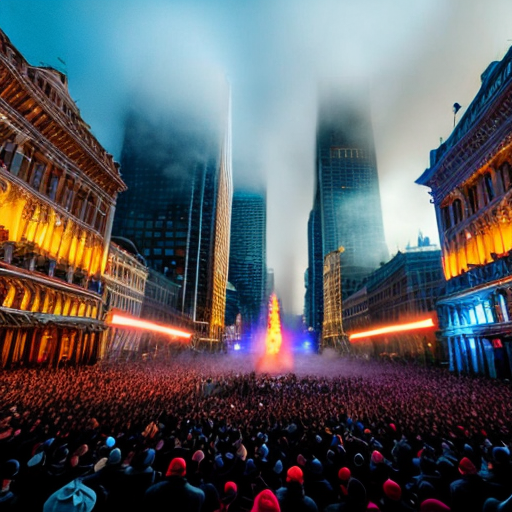The Renaissance: Unveiling the Cultural Rebirth and Artistic Flourishing
The Renaissance, a historical era characterized by a cultural rebirth and artistic flourishing, was a transformative period in European history. Emerging in the 14th century in Italy, the Renaissance saw a revival of interest in classical learning, literature, and art. This period was marked by significant advancements in science, philosophy, and exploration, as well as the patronage of wealthy families and rulers who supported the arts. The Renaissance also witnessed the development of new artistic techniques, such as perspective and chiaroscuro, which revolutionized the way artists depicted the world around them. Overall, the Renaissance was a time of great innovation and creativity that continues to influence and inspire artists and thinkers to this day.
The Industrial Revolution: Transforming Societies through Technological Advancements
These events characterize the Renaissance era, a period of great cultural and intellectual change that spanned from the 14th to the 17th century in Europe.
The Industrial Revolution, a historical era characterized by transformative technological advancements, reshaped societies and economies across the globe. Beginning in the late 18th century in Britain, the Industrial Revolution saw the mechanization of production processes, leading to the mass production of goods and the rise of factories. This period marked a shift from agrarian economies to industrialized ones, as new inventions like the steam engine and spinning jenny revolutionized manufacturing and transportation. The Industrial Revolution also brought about significant social changes, including urbanization, the growth of the middle class, and the rise of labor movements. Overall, this era was a turning point in human history, laying the foundation for modern industrial societies.
The Roaring Twenties: A Decade of Social Change and Jazz Age Exuberance

The Roaring Twenties, a historical era characterized by social change and Jazz Age exuberance, was a vibrant and transformative period in American history. Following the end of World War I, the 1920s saw a shift towards modernity and a rejection of traditional values. This decade was marked by a newfound sense of freedom and liberation, as women gained more independence, flappers challenged societal norms, and Prohibition led to the rise of speakeasies and bootlegging. The Roaring Twenties also witnessed a cultural explosion, with the Harlem Renaissance showcasing African American art, music, and literature, and the popularity of jazz music spreading across the country.
In addition to its cultural impact, the Roaring Twenties was a time of economic prosperity and technological advancement. The decade saw the widespread adoption of new technologies such as automobiles, radios, and telephones, which revolutionized communication and transportation. The booming stock market and consumer culture of the 1920s fueled a period of unprecedented economic growth and material abundance. However, this prosperity was not evenly distributed, as income inequality widened and rural areas struggled to keep pace with the urbanization and industrialization of the time.
Despite the economic and cultural achievements of the Roaring Twenties, the decade was not without its challenges and contradictions. The excesses of the Jazz Age led to moral and social backlash, with conservative groups pushing for stricter censorship and the enforcement of traditional values. The decade also ended on a somber note with the onset of the Great Depression, which brought an abrupt end to the economic boom of the 1920s. Nevertheless, the legacy of the Roaring Twenties lives on in its lasting impact on American society and culture, as well as its role in shaping the modern world.
The Cold War Era: Global Tensions and the Battle for Supremacy
Fun fact: The historical era characterized by events such as the construction of the Great Wall of China, the invention of paper, and the development of the Silk Road is known as the Classical Era in Ancient China.
The Cold War era, characterized by global tensions and the battle for supremacy between the United States and the Soviet Union, was a defining period in 20th-century history. Emerging in the aftermath of World War II, the Cold War was marked by ideological, political, and military rivalry between the two superpowers, as well as their respective allies. This era was characterized by a nuclear arms race, proxy wars, and the division of the world into spheres of influence. The Cold War era also saw the rise of new technologies, espionage, and propaganda efforts as both sides sought to gain the upper hand in the struggle for dominance. Ultimately, the Cold War era shaped international relations and geopolitics for decades to come, leaving a lasting impact on the global landscape.

